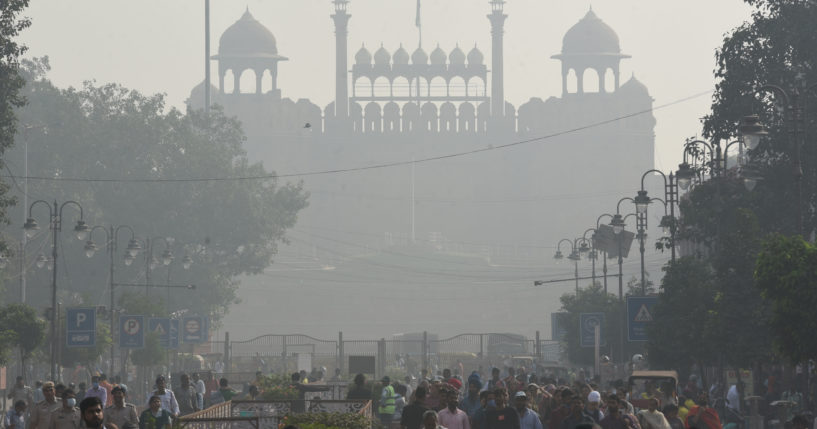
Schools Close, Businesses Shutter Due To 'Dangerous' Air Quality In New Delhi

AccuWeather forecasters say air quality levels have once again reached extremely hazardous levels across a large swath of Asia, with some of the worst conditions around the globe centered on India’s capital city of New Delhi. Dangerous air quality this week across New Delhi’s greater metro area, home to tens of millions of residents, has forced officials to take action.

On Friday, officials in India shut down factories and construction sites, restricted the use of diesel-run vehicles, deployed water sprinklers and used anti-smog guns in response to air quality levels soaring to incredibly hazardous levels, according to The Associated Press.
In addition, primary schools across New Delhi were closed, and authorities ordered schools to stop outdoor activities for older children, Reuters reported.
Delhi’s environment minister Gopal Rai announced that 50% of Delhi government employees will be told to work from home until further notice, according to Reuters. Rai also urged private businesses to take similar steps.
The Air Quality Index (AQI) exceeded 470 for a time Friday afternoon in New Dehli, the AP reported.
The AQI is a measure of how healthy it is to breathe the air at a given time, with higher numbers indicating unhealthier air quality. According to Plume Labs, a company acquired by AccuWeather, an AQI reading over 250 is considered dangerous, and any exposure to the air, even for a few minutes, can lead to serious health impacts for anyone.
Portions of the region experiencing dangerous air quality were blanketed in thick smog at the end of the week. Smog is essentially a fog that develops and mixes with smoke and other pollutants trapped near the surface, creating hazardous clouds that also drastically limits visibility. Prolonged bouts of smog can become deadly.
Visibility at the Indira Gandhi International Airport, the primary airport serving the Delhi area, has not risen above 1 mile (1.6 km (5249.60 feets)) since early Thursday morning. The airport’s weather station reported either smoke or fog every single hour for the last several days.
Smog and haze enveloped area monuments and rendered some high-rise buildings in New Delhi almost invisible on Friday.
Following the end of the southwest monsoon season and with winter on the horizon, air quality typically takes a significant hit across a large portion of Asia. The worst air quality typically centers along northern India, along with portions of neighboring Bangladesh to the east and Pakistan to the west.

New Delhi is often the most polluted capital city in the world due to a combination of factors that drastically reduce air quality.
“Light winds combined with very dry conditions have helped to worsen the air quality across parts of northern India and surrounding countries,” AccuWeather Meteorologist Alyssa Smithmyer explained. “A combination of weather conditions, dust, industry pollution and vehicle exhaust may be to blame for the poor air quality.”
Light winds and a lack of rainfall work to trap hazardous pollutants near the surface.
“In addition, smoke from burning crops and farm fires in the north Indian state of Punjab can also decrease the air quality across the region,” Smithmyer added.
Unfortunately, residents across northern India hoping to get some breathing help from Mother Nature in the coming days won’t see much of an improvement.
“Throughout the upcoming week, winds will likely remain light, and dry weather will persist across northern and central India,” Smithmyer said. “Stagnant conditions will likely mean a poor outlook for air quality this upcoming week.”
Produced in association with AccuWeather.
The Western Journal has not reviewed this story prior to publication. Therefore, it may not meet our normal editorial standards. It is provided to our readers as a service from The Western Journal.
Truth and Accuracy
We are committed to truth and accuracy in all of our journalism. Read our editorial standards.
Advertise with The Western Journal and reach millions of highly engaged readers, while supporting our work. Advertise Today.










